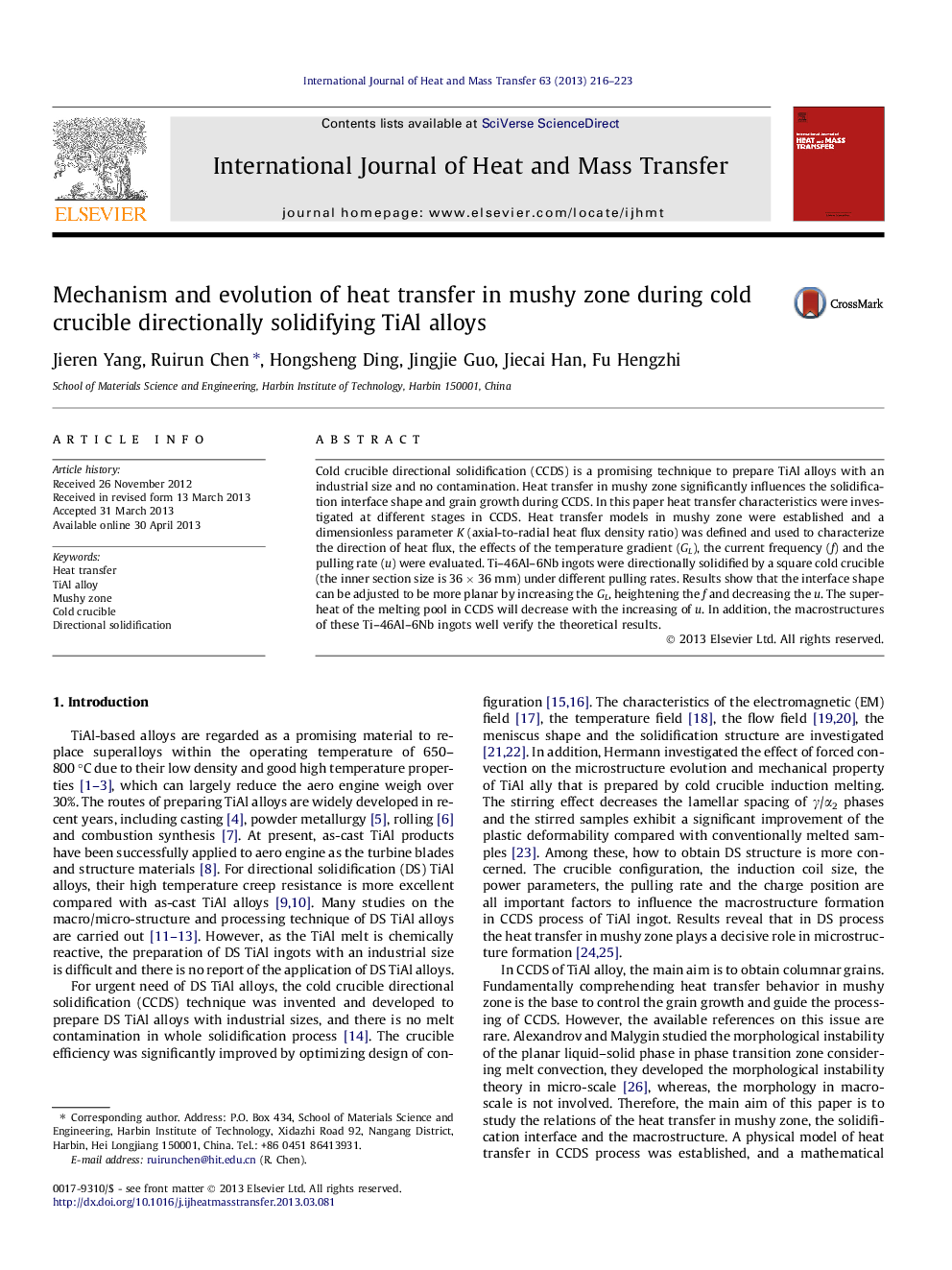| Article ID | Journal | Published Year | Pages | File Type |
|---|---|---|---|---|
| 658161 | International Journal of Heat and Mass Transfer | 2013 | 8 Pages |
Cold crucible directional solidification (CCDS) is a promising technique to prepare TiAl alloys with an industrial size and no contamination. Heat transfer in mushy zone significantly influences the solidification interface shape and grain growth during CCDS. In this paper heat transfer characteristics were investigated at different stages in CCDS. Heat transfer models in mushy zone were established and a dimensionless parameter K (axial-to-radial heat flux density ratio) was defined and used to characterize the direction of heat flux, the effects of the temperature gradient (GL), the current frequency (f) and the pulling rate (u) were evaluated. Ti–46Al–6Nb ingots were directionally solidified by a square cold crucible (the inner section size is 36 × 36 mm) under different pulling rates. Results show that the interface shape can be adjusted to be more planar by increasing the GL, heightening the f and decreasing the u. The superheat of the melting pool in CCDS will decrease with the increasing of u. In addition, the macrostructures of these Ti–46Al–6Nb ingots well verify the theoretical results.
